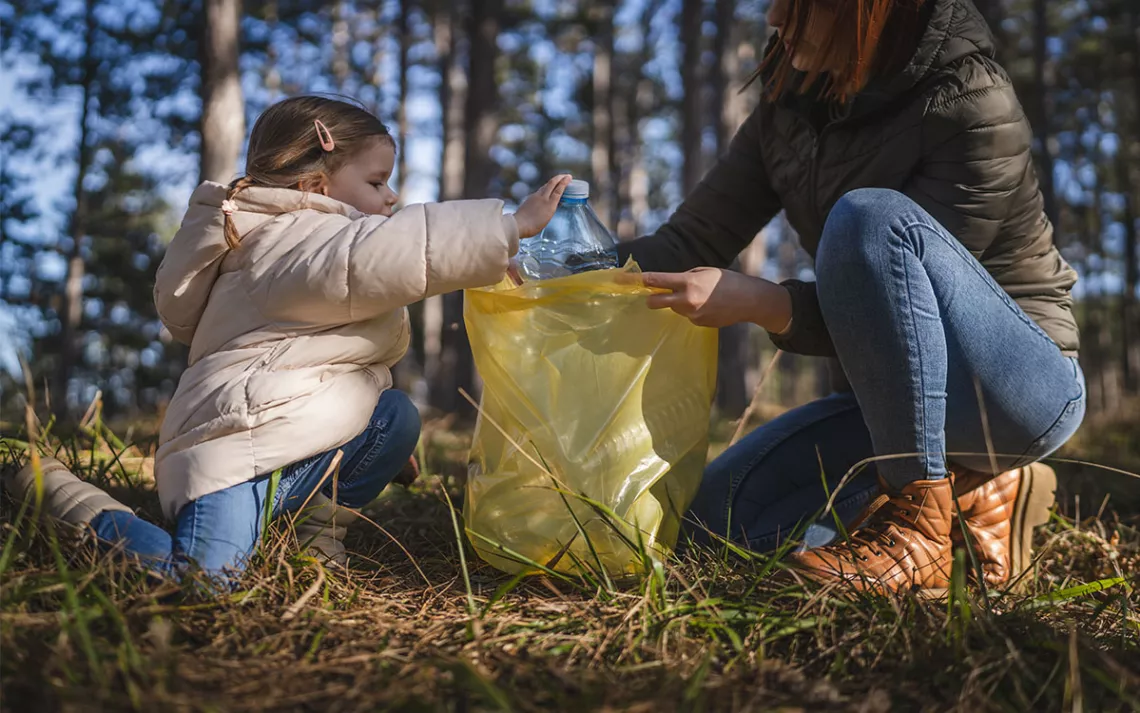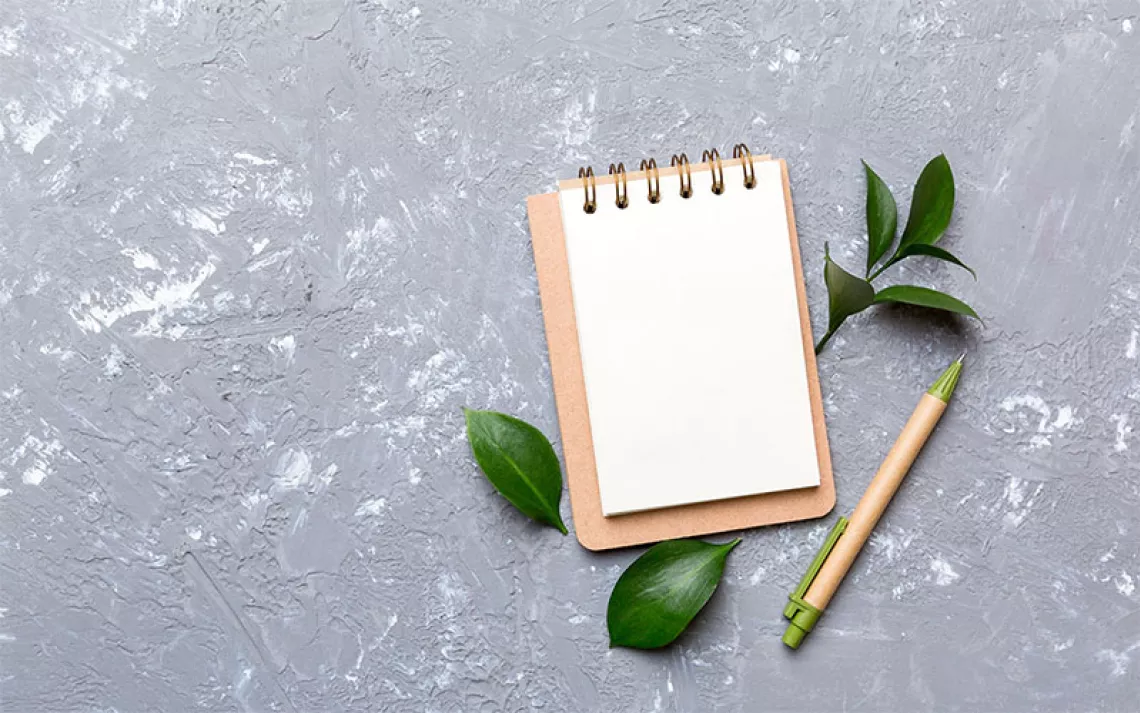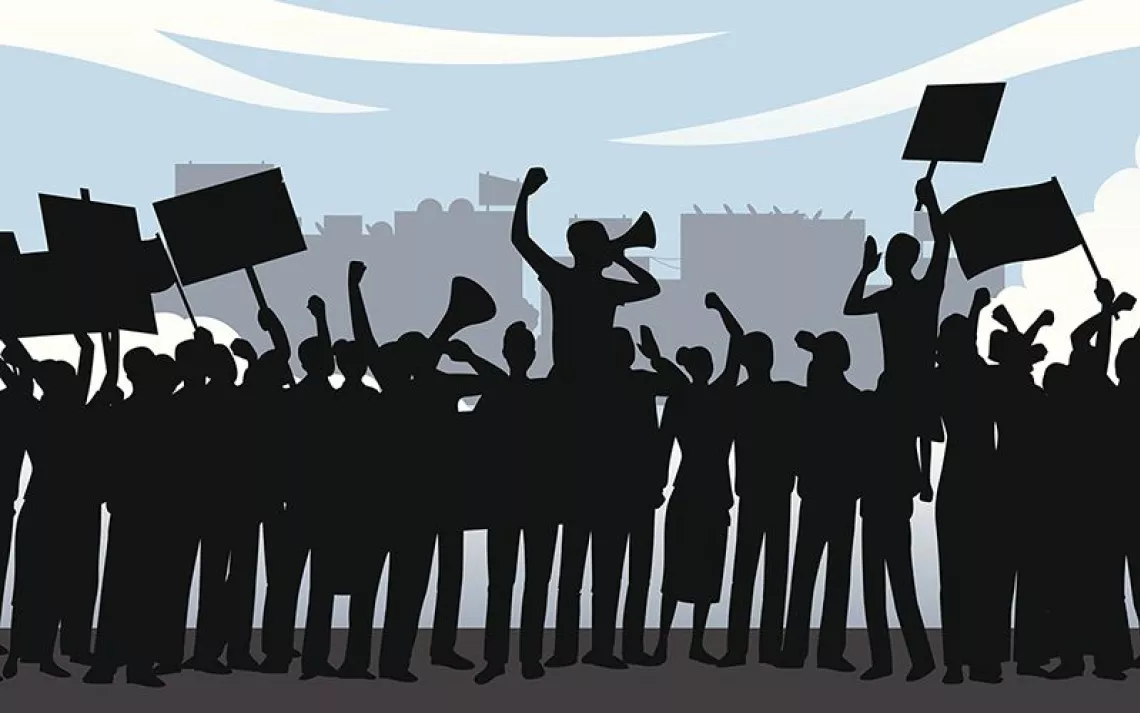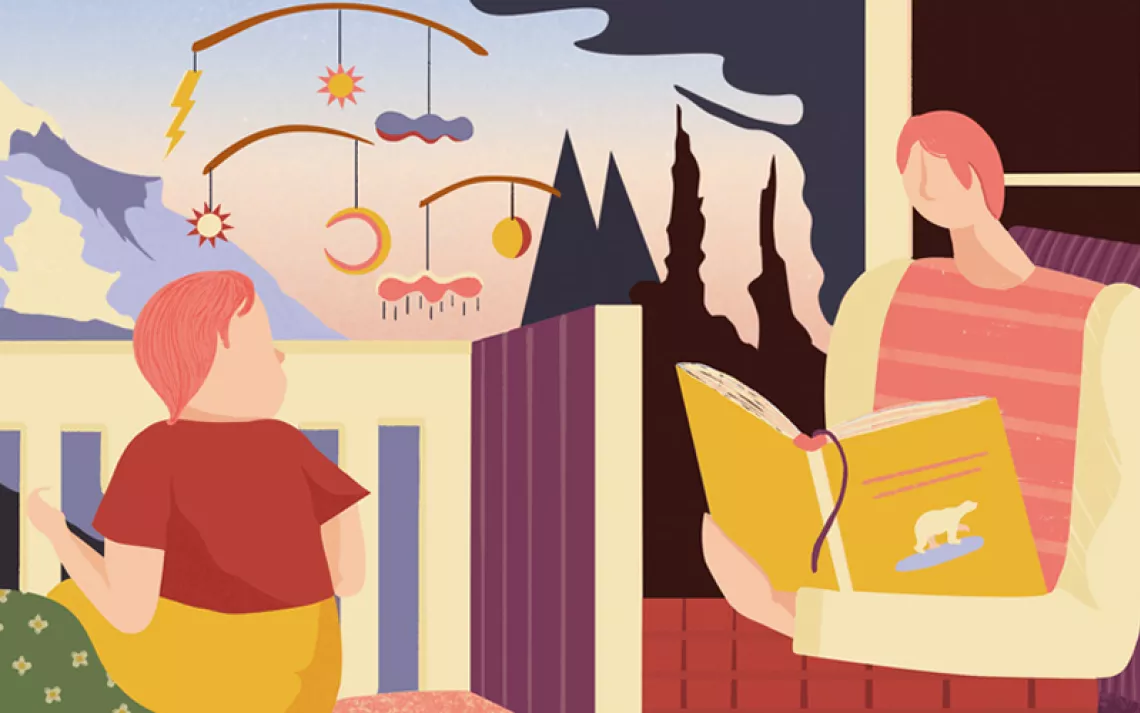How to Green a Toddler (or Preschooler)
Songs, books, and games for the kid in all of us

Photo by Miljan Živković/iStock
The best way to guide children toward behavior change is to be a role model for that change. Children see what we do and are influenced by what they see. According to one study of eco-parenting techniques, the most successful parenting style with children is to give them reasons why a certain behavior is important. Researchers identified three strategies for a successful eco-parenting style: First, talk about how everything each human does affects other living beings and the air, water, and soil that all beings need. Second, be the change you want to see in the world. Show them how to do the 6Rs in this order: refuse (say “no, thanks” to what you don’t need), repair, rot (compost), reduce, reuse, and recycle. Also show them how to respect creatures and plants, conserve water and energy, and get what you need locally. And third, tell kids when you use less-toxic and green products and services.
How can you apply those strategies yourself? By dropping into your toddler’s world of play with fun songs, books, and games on what to do (instead of what not to do) to be greener.
Grab the mic
Songs have sparked revolutions, and rhymes help people remember things. You can use them as a fun way to get your kid into everything from cleaning up a local beach to recycling. Rubbish Reads’ “The Beach-Cleaning Crab” and “Sea Monkeys Cleaning the Seabed,” BabyBuzz’s “Reduce, Reuse, Recycle,” FlareHazard’s “Recycle Reduce Reuse and Close the Loop,” Puyarujote’s “Going Green,” and Hila the Earth’s “Joyful Action.” Sing them outside. Research shows when kids make music outside, they bond with nature.
Books for the win
There’s nothing like reading a bedtime story that’s all about caring for others. Here are some of my favorites, and they are printed on certified Forest Stewardship Council Mix paper, a mix of new trees from FSC-certified forests, recycled materials, and/or FSC-controlled wood: Change Starts With Us by Sophie Beer, I Love the Earth by Todd Parr, Maisy's Recycling Truck and A Good Place by Lucy Cousins, I Can Save the Earth!: One Little Monster Learns to Reduce, Reuse, and Recycle by Alison Inches, Let's Find Out Where Wonder Grows! by Xelena González, and The Thing About Bees: A Love Letter by Shabazz Larkin.
Turn it into a game
Put their new knowledge into action. Turn outdoor recreation, conservation, recycling, and composting into a green educational game. For example, the next time you take your kid out onto your favorite trail for a hike, bring a bag and make a game out of how many pieces of trash you can clean up off your trail. Add bonus points to anyone who can find a recyclable that you can bring back to a recycling bin.
Some local waste management agencies have online sorting games for kids, like Rhode Island’s “Ready, Set, Sort!” or Boulder County’s game for testing your kids’ sorting knowledge. Make sure you use your local agency’s game because different agencies accept different things. Ask them for signs for your compost and recycling bins with pictures and words of what goes where. Or make your own. Add a red frowny face on bins for the landfill. (A study found that encouraged people to recycle more.) Make it easy for everyone to do the right thing by putting compost and recycling bins next to the bin for the landfill.
Take your kid to a local nursery and invite them to pick out a plant for your backyard or community garden. Invite them to name their plant and help them pick out the exact spot where to plant it. They can then visit with their new green friend every week to water it, feed it, and take care of it. Next, help them write their own bedtime story with their plant as the main character and you can read the story together and keep adding to it over time.
When you’re in the mood for a board game, try the award-winning Petit Collage’s Rush to Recycle, where kids sort all their recyclables and compostables before the pick-up truck arrives. It’s made with over 50 percent recycled materials and printed with vegetable inks. Or try FSC-certified Kid’s Concept’s wooden recycling and composting game with water-based paints (available in the USA from Smallable). You might not need to buy any new games or toys if you host a toy swap party where kids can exchange their toys with each other.
Research shows that when it comes to teaching your children about how to protect the planet, it’s not enough to just give them time outdoors. The more people around them encourage empathy and care for plants, animals, and their homes, the more their kids will care too.
 The Magazine of The Sierra Club
The Magazine of The Sierra Club



